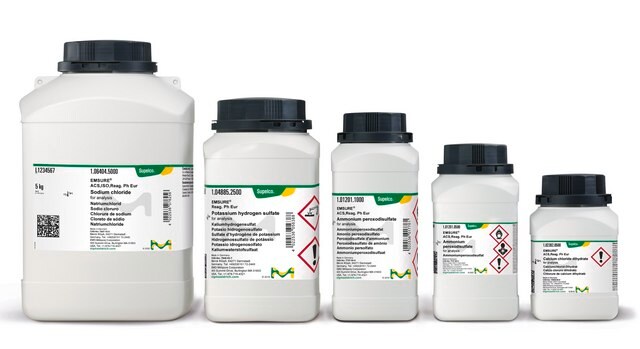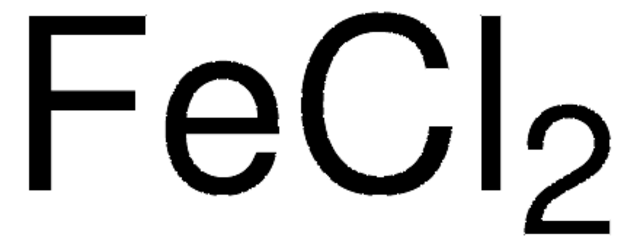추천 제품
Quality Level
분석
>99.99% trace metals basis
양식
granular
저항도
9.71 μΩ-cm
입자 크기
10-40 mesh
bp
2750 °C (lit.)
mp
1535 °C (lit.)
density
7.86 g/mL at 25 °C (lit.)
SMILES string
[Fe]
InChI
1S/Fe
InChI key
XEEYBQQBJWHFJM-UHFFFAOYSA-N
일반 설명
애플리케이션
- Progress and perspectives on iron-based electrode materials for alkali metal-ion batteries: a critical review.: This review explores the recent advancements and future prospects of iron-based electrode materials in alkali metal-ion batteries, highlighting their potential for high energy density and sustainable energy storage solutions (Li et al., 2024).
- Iron-Based Electrodes Meet Water-Based Preparation, Fluorine-Free Electrolyte and Binder: : This study examines the use of water-based preparation methods and fluorine-free electrolytes in the development of iron-based electrodes, proposing a more sustainable approach to lithium-ion battery production (Valvo et al., 2017).
신호어
Warning
유해 및 위험 성명서
Hazard Classifications
Flam. Sol. 2 - Self-heat. 2
Storage Class Code
4.2 - Pyrophoric and self-heating hazardous materials
WGK
nwg
Flash Point (°F)
69.8 °F
Flash Point (°C)
21 °C
문서
In recent years, the price of tellurium, a key component in the bestperforming thermoelectric materials, has increased significantly, leading to the question, “Is it economically viable to produce thermoelectric generators on an industrial scale?
The price of tellurium, a key component in many thermoelectric materials, has risen in recent years, leading to the search for more cost-effective substitutes. This article presents silicide materials as a cheaper potential alternative.
The unique properties of the rare-earth elements and their alloys have brought them from relative obscurity to high profile use in common hightech applications.
자사의 과학자팀은 생명 과학, 재료 과학, 화학 합성, 크로마토그래피, 분석 및 기타 많은 영역을 포함한 모든 과학 분야에 경험이 있습니다..
고객지원팀으로 연락바랍니다.




